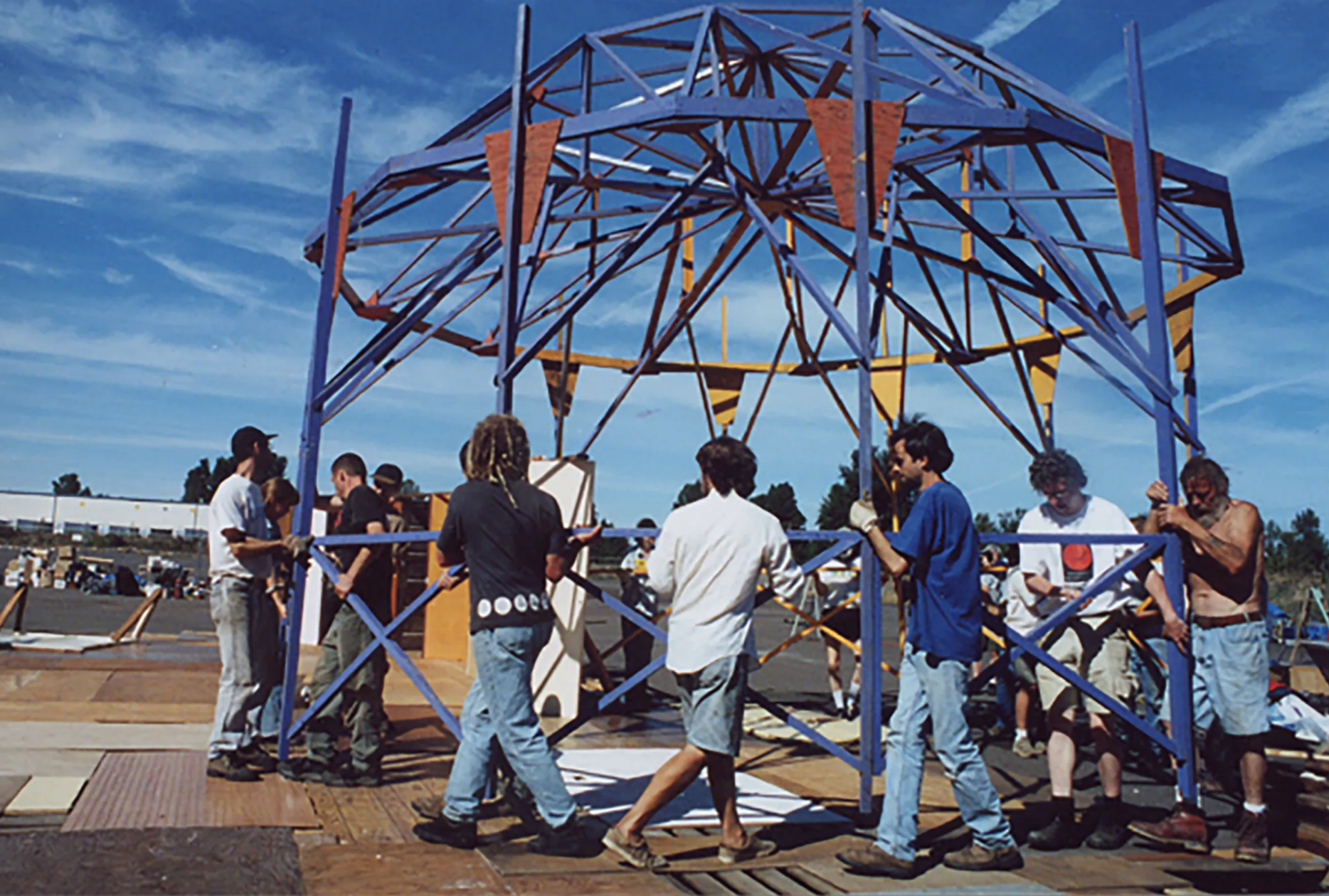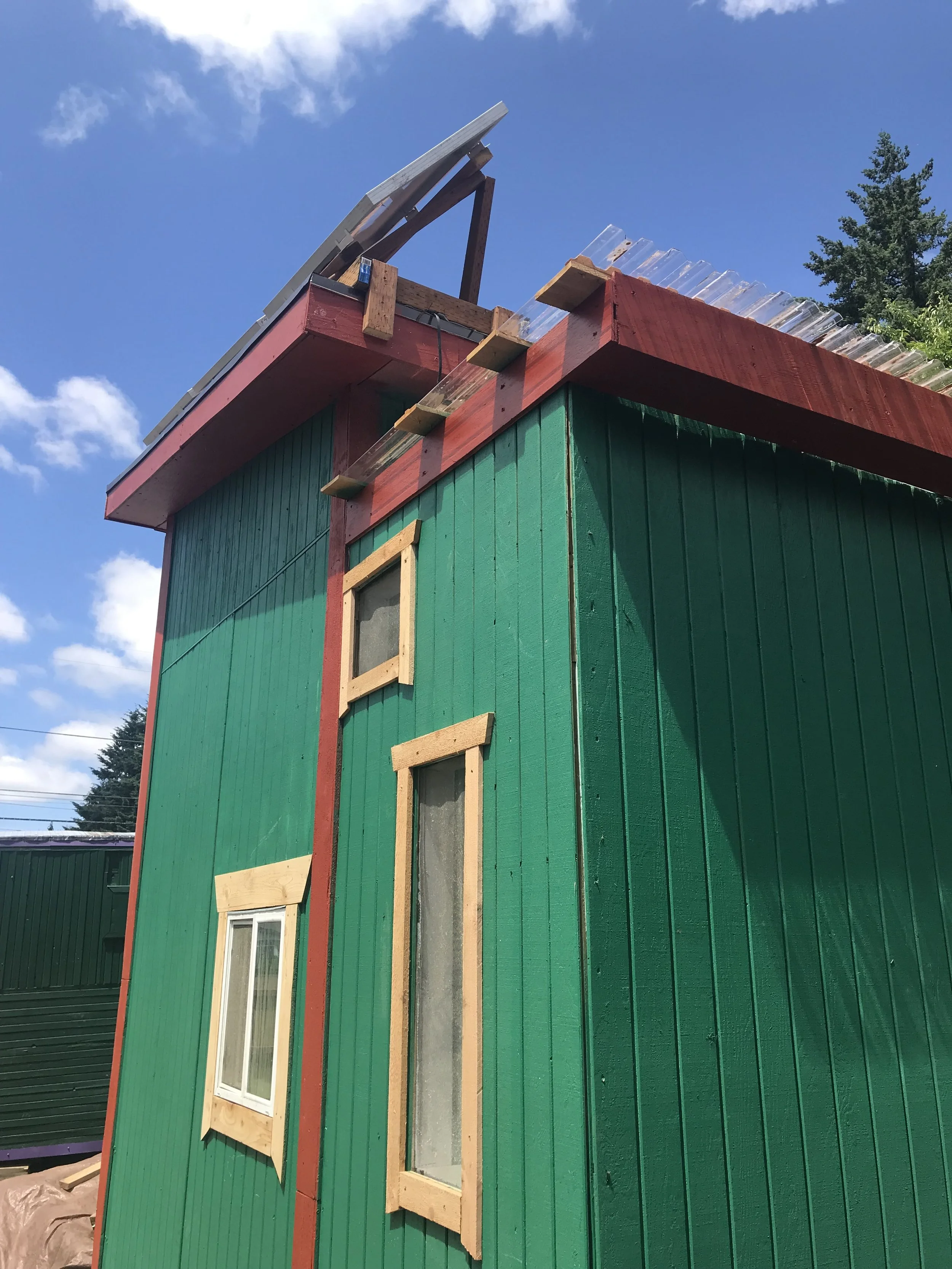
Welcome to the Micro Village Resource Center
The “Micro Village” has emerged as an effective, desired, and viable model that helps people experiencing houselessness heal from trauma and transition to stable housing. Micro villages offer a positive impact on the neighborhood, advantages to operators, and clear benefits that help villagers on their journeys.
The heart of a micro village is the village community. It will be an integral part of your neighborhood, businesses, cultural organizations, faith groups, and more. Together you will reach agreement about shared goals and needs.
The villagers' needs will drive where the micro village will be located and what structures will be placed, and will continue to be part of the creation and operation process.
To run a micro village successfully, a variety of services need to be put into place. They range from garbage removal, restrooms, laundry to medical and social services, to programming and workforce development. Several of them can be in the village or delivered via mobile services.
Many stakeholders are involved in the process working closely together to remove barriers, provide continuous funding, and help villagers on their journeys.
What is a Micro Village?
A micro village is a safe, stable, welcoming, self-contained, and dignified living environment rooted in community and villager agency. The communal scale – with space for 12 to 21 people and their pets – provides opportunities for empowerment and leadership development to individuals and couples experiencing houselessness.
Micro villages are uniquely positioned to fulfill multiple areas of need for both housed and unhoused members of our communities. This includes serving the most vulnerable populations over represented in the unhoused population such as BIPOC, LBGTQ2SIA+, seniors, medically fragile people, people with disabilities, and neurodivergent people.
Structures include private units for sleeping and shared areas for fundamental needs such as restrooms, showers, laundry, kitchens, as well as activities such as gardens, gathering spaces, libraries, and workshops.
A micro village can operate as an emergency shelter, offer transitional housing, provide long-term community living in cooperative and co-housing forms, or all of these.
Micro villages offer a compassionate and innovative solution, among many varied approaches, to the complex issue of houselessness by offering a supplemental approach to traditional shelters and other temporary housing options.
Village History
The Village Model in Portland began in October 2000, when unhoused Homeless Front activists and Street Roots vendors formed a group called Out of the Doorways.
In December 2000, they started Camp Dignity, an unsanctioned tent encampment, using civil disobedience, showy shopping cart parades, and press conferences to bring attention to their struggle. The democratic decision-making they developed formed a resilient bond, and features at the root of the village model. In 2001, members created a 501(c)3 nonprofit, Dignity Village, and began operating as a legally sanctioned temporary campground.
Dignity Village has been refining the village model and inspiring movements around the world for nearly 25 years.

Create
Create your micro village with a person-centered approach, meaning:, the needs of the people come first and drive the design. As the community forms and grows, its culture, values, and needs emerge, which will inform required medical and social services. Use this knowledge to decide on the type of sleeping units, community space, and location that the village will require.
Micro villages can be built on unused land or be established within repurposed properties, such as converted single family homes, detached or attached accessory units, cottage clusters, small motels or apartments, and mobile units.
Operate
Villages may be established and operated by intentional unhoused and housed communities, nonprofit organizations, neighborhood groups, faith institutions, local governments, and others.
There are a variety of approaches to governance and operations of a micro village. Micro villages that emphasize self-governance (a supported self-management structure and villager authority in decision-making) and active participation have success in building community and agency among villagers. You’ll also need to establish community rules, intake process, staffing priorities and capacity, and programs and services based on community needs.
Live
While structures offer comfort and safety, the village community, culture of care, and the experience of living, making decisions, and working in community, together create the uniquely healing environment of a micro village.
A thriving community life emerges from shared values, practices, responsibilities, and activities that foster social bonds and support villager needs and interests. Opportunities for creative expression and skill development, as well as connections and mutual support with surrounding neighbors, strengthen the village community.
Partner
Resources
This collection of plans, handbooks, policies and procedures, good neighbor agreements, intake processes, and more encompass many lessons learned by Portland’s micro village communities, builders and operators.
Neighborhood Resources
This section helps you identify neighborhood resources and allies that will align with your village and practices to build community connections and support. It includes the many lessons learned by villages and community and neighborhood groups that support villages.
Portland’s Micro Villages
This map shows nine existing and self-governed micro villages, and two that will open in 2024. Currently all are located in North, Northeast and Southeast Portland.
The micro village vision is an ecosystem that distributes villages equitably across the city’s neighborhoods.




